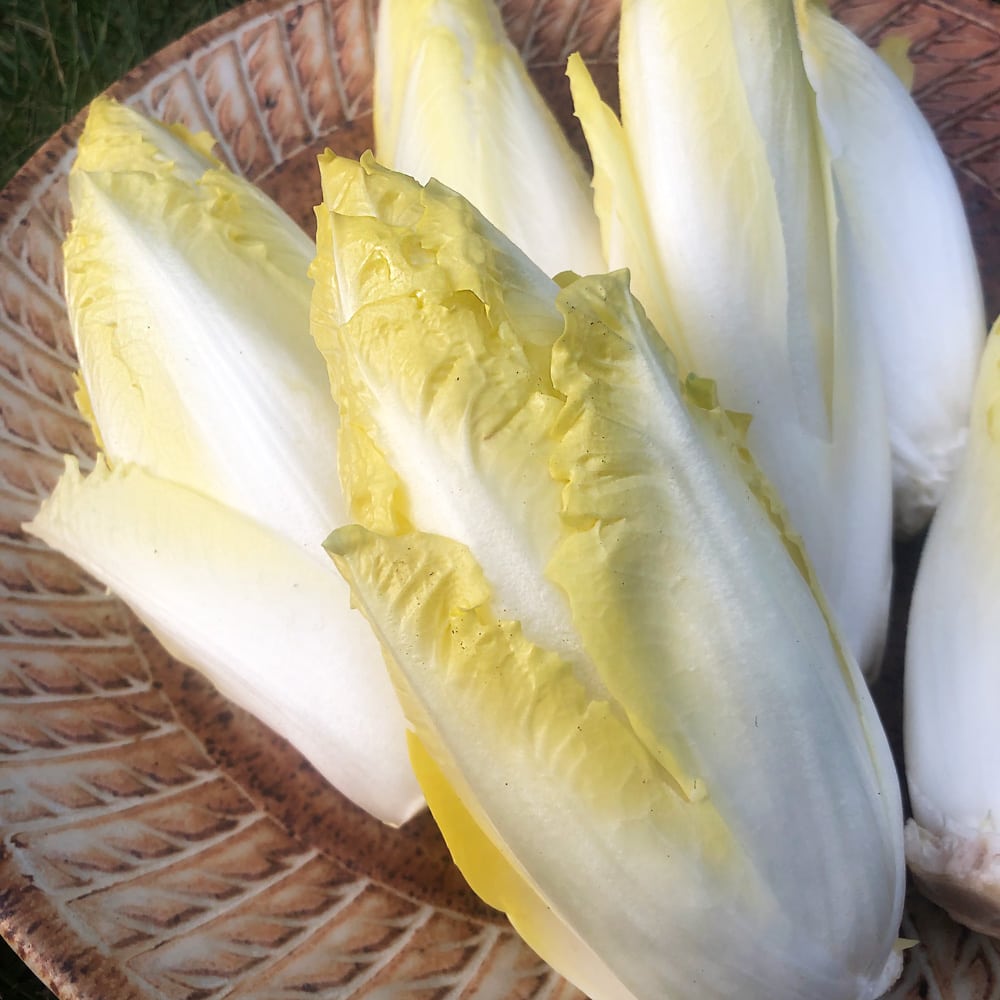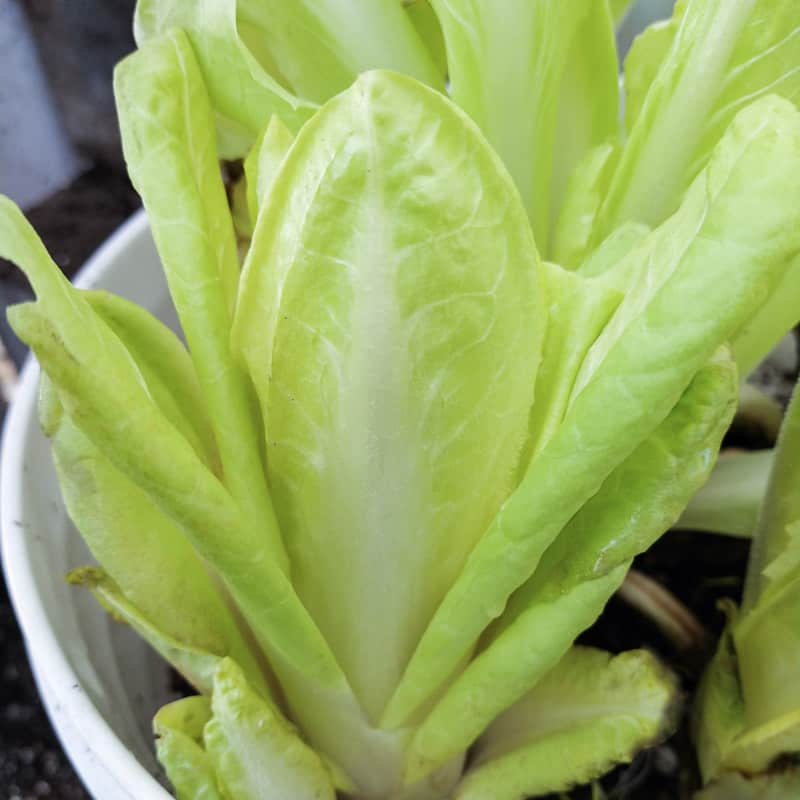Belgian Endive, Demi-Hâtive de Malines (Organic)
Cichorium intybus. Belgian / forcing type. 90 days for root; up to 260 days for forcing.
Delicious Belgian / Witloof type endive, that can easily be forced in simple production conditions. Belgian endives are grown during the main season (direct sown in June). Roots are then dug in early fall and forced in darkness (either in soil, in a cellar, or under the kitchen sink) throughout winter to harvest the characteristic dense, elongated, blanched heads. Demi-Hâtive de Malines translates to “Half Early from Malines” and is a traditional, open pollinated variety that was selected for this purpose in the Malines (aka Mechelen) area of Belgium. The industry has transitioned to hybrids, and open pollinated varieties like this one have become very hard to find. Our foundation seed came from a seed smuggling friend who sourced it from a French seed company. For more growing details see the ‘Growing and Seed Saving’ tab below.
Seed produced by Empowered Flowers in Canby, Oregon.
| Weight | N/A |
|---|---|
| Geographical Origin |
Belgian Endive is best direct sown May through June to promote large taproots. If necessary, may also be transplanted into the garden 3-4 weeks after sprouting but results are less optimal. Thin to 8″ centers. Dig roots for forcing beginning in September but before soil is too wet and/or frozen to dig. Trim tops to 1/2″ and trim roots to main taproot, and store roots in a cold area (unheated garage, root cellar, or refrigerator) until ready to force. Plants should have at least a 1″ wide crown to produce a good chicon and must be vernalized for at least one month, which may occur in the field or in the cooler, prior to forcing. Force heads by placing in growing medium in a warm, completely dark environment. A 5 gallon bucket half-filled with moistened potting mix is a good container to use. The first harvest is in three to four weeks and produces the highest quality heads, but each root may be harvested up to three times.
Seed Saving
Collect seeds from 10 or more plants in second year when seeds have dried down. Cut whole plants, place on tarp, then dance and stomp to free the seed. Or place dry plants on tarps and drive on them. Screen and winnow to clean. Isolate from other Cichorium sp. by ½ mile.




What others are saying
There are no contributions yet.